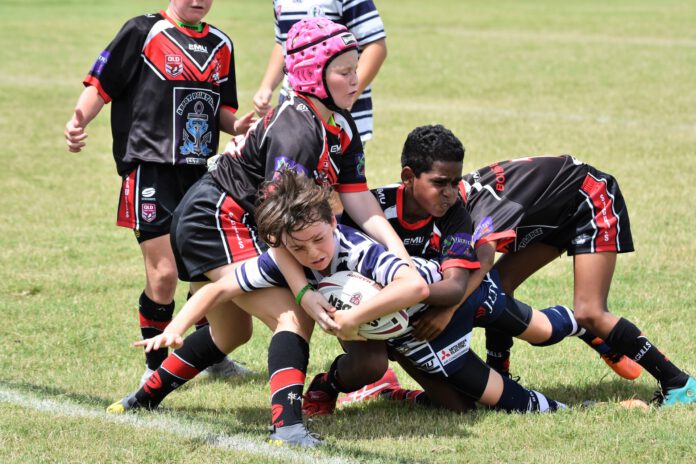The try: Must have “downward pressure”
Tries can be scored in a number of ways, other than running over the try line and putting the ball down.They include the pushover try, scored by driving the opposition’s scrum back over its own line; the momentum try, where a player slides into the in-goal area; and the penalty try, awarded when a team illegally obstructs the opposition to prevent a certain try from being scored.
There is no such thing as an “own try”. If you touch the ball down in your own in-goal area, it results in a kick or a scrum.
Conversion:If a team scores a try, they have an opportunity to “convert” it for two further points by kicking the ball between the posts and above the crossbar – that is, through the goal. The kick is taken from a point level with where the try was scored.
Penalty kick:If a side commits a serious offence, a penalty is awarded and the opposition can take the option of a place kick at goal from where the infringement occurred. If successful, it is worth three points.
Drop goal: A drop goal for three points is scored when a player kicks the ball from hand through the opposition’s goal. But the ball must touch the ground between being dropped and kicked.
The tackle: There is no limit on the number of tacklers
Kicking: Kicking forms a major part of rugby and is used to start and restart the game, score points, win territory, launch an attack or get a team out of trouble (known as a clearance kick).If the ball is kicked directly into touch by a player from behind his own 22m line, the resulting lineout is taken where the ball crossed the touchline.
But if he is outside his 22, the lineout is taken level with the place from where the ball was kicked (except in the case of penalties).
Players must be behind the kicker for all set piece kicks, such as kick-offs. But if a kick is made in loose play, then players can be in front of the kicker, although they must not advance towards where the ball is going to land until the kicker has put them onside by getting in front of them.
Players use a wide range of kicks, such as the high, hanging up-and-under/garryowen/bomb; the end-over-end grubber kick; or the speculative chip-and-chase.
Tackling: Only a player in possession of the ball can be tackled. American football-style blocking is not allowed. A tackled player must release the ball after he hits the ground. Neither he nor the tackler can play the ball until they are on their feet.
It is illegal to high tackle above the shoulders, or to “spike” a player by deliberately upending him onto his head. The same goes for the late tackle – taking the player after he has passed or kicked the ball.
It is also illegal to punch, gouge, stamp on or kick another player.
Heavy tackles are colloquially known as dump tackles, while an attempt to prevent the ball being released quickly is sometimes called a smother tackle.










